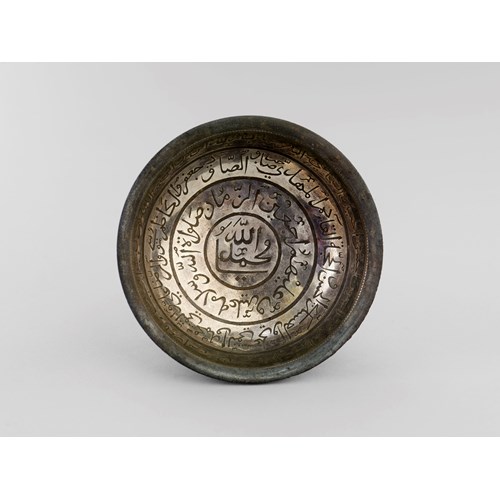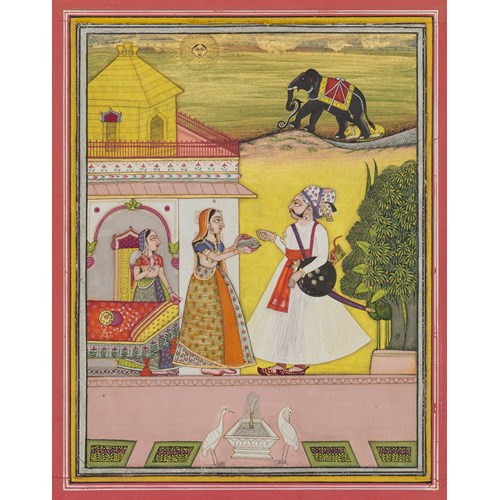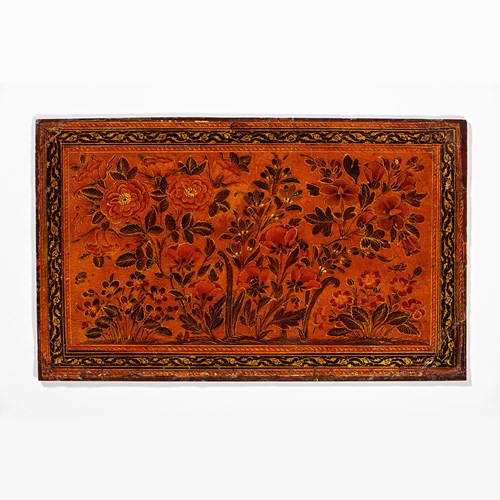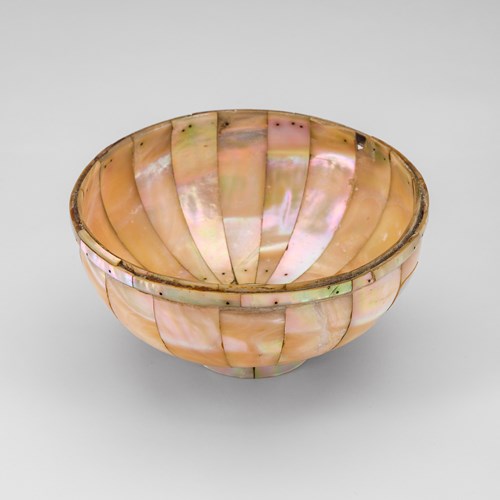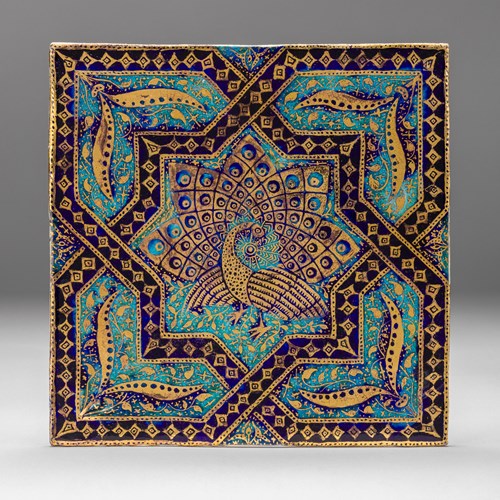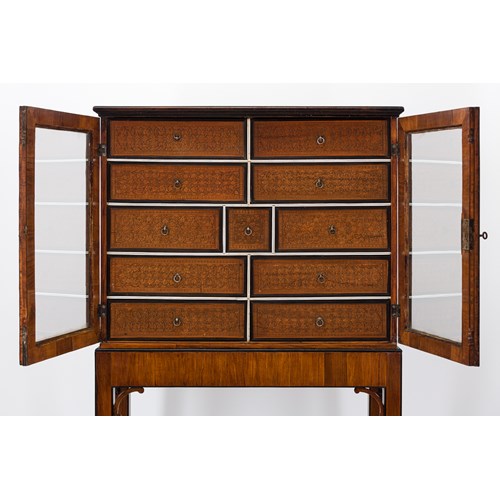Marketplace
Calligraphic Tile
Calligraphic Tile
Date Late 13th – early 14th century
Period Middle Ages
Origin Iran, Kashan
Medium Ceramic, Cobalt blue glaze
Dimension 14 x 34 cm (5¹/₂ x 13³/₈ inches)
This rectangular fritware tile features a moulded naskh inscription accentuated with a cobalt blue glaze, set against a background of delicate, scrolling vegetal motifs. Gold lustre decorates the ground, and is painted over an opaque white glaze covering the tile.
Lustre tiles from the Ilkhanid period (1256-1353) could be found surrounding mihrabs (prayer niches) or cenotaphs, and as friezes along the walls of tombs, religious structures or palaces. The bold, raised inscriptions meant they could be read from a distance, and generally included verses from the Qur’an. Our piece would have formed part of a row of tiles, as the text is incomplete, reading:
‘...earth. Who is there…’
This forms part of the Ayat al-Kursi or ‘Throne Verse’ (255) from sura 2 (al-Baqarah) of the Qur’an. Completed, the two sentences should read: ‘His are all things in the heavens and on earth. Who is there can intercede in His presence except as He permitteth?’ (translation taken from: Ali, Abdullah Yusuf. The Holy Qur’an: Text, Translation & Commentary, 3rd ed., Sheikh Muhammad Ashraf, Lahore, 1938).
Kashan was an important centre for the production of lustreware ceramics from the late 12th to early 14th century, many examples of which are now dispersed among collections worldwide. For similar examples to our tile, see the Victoria and Albert Museum, London, Accession Numbers 731A-1888 & 1517-1876.
Stock no.: A4706
Lustre tiles from the Ilkhanid period (1256-1353) could be found surrounding mihrabs (prayer niches) or cenotaphs, and as friezes along the walls of tombs, religious structures or palaces. The bold, raised inscriptions meant they could be read from a distance, and generally included verses from the Qur’an. Our piece would have formed part of a row of tiles, as the text is incomplete, reading:
‘...earth. Who is there…’
This forms part of the Ayat al-Kursi or ‘Throne Verse’ (255) from sura 2 (al-Baqarah) of the Qur’an. Completed, the two sentences should read: ‘His are all things in the heavens and on earth. Who is there can intercede in His presence except as He permitteth?’ (translation taken from: Ali, Abdullah Yusuf. The Holy Qur’an: Text, Translation & Commentary, 3rd ed., Sheikh Muhammad Ashraf, Lahore, 1938).
Kashan was an important centre for the production of lustreware ceramics from the late 12th to early 14th century, many examples of which are now dispersed among collections worldwide. For similar examples to our tile, see the Victoria and Albert Museum, London, Accession Numbers 731A-1888 & 1517-1876.
Stock no.: A4706
Date: Late 13th – early 14th century
Period: Middle Ages
Origin: Iran, Kashan
Medium: Ceramic, Cobalt blue glaze
Dimension: 14 x 34 cm (5¹/₂ x 13³/₈ inches)
More artworks from the Gallery




